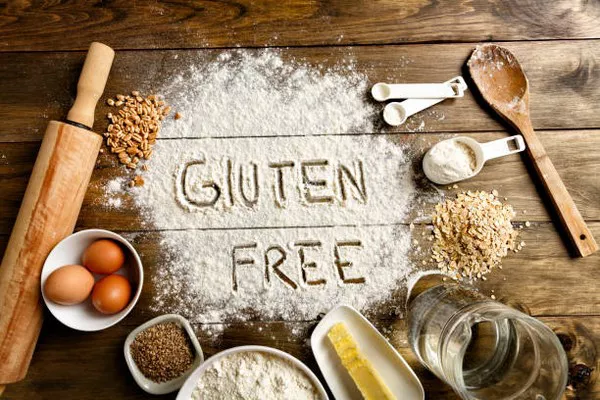Living with gluten and lactose intolerance can present unique challenges when it comes to maintaining a balanced and nutritious diet. Both conditions require careful attention to food choices to avoid discomfort and promote overall well-being. Fortunately, with proper planning and knowledge of suitable alternatives, individuals with gluten and lactose intolerance can still enjoy a diverse and satisfying diet. In this comprehensive guide, we will explore the dietary strategies and food options available to those managing these intolerances, empowering them to make informed choices for optimal health.
Understanding Gluten and Lactose Intolerance
Before delving into dietary recommendations, it’s essential to understand the nature of gluten and lactose intolerance and how they affect the body.
Gluten intolerance, also known as celiac disease, is an autoimmune disorder triggered by the ingestion of gluten—a protein found in wheat, barley, and rye. In individuals with celiac disease, consuming gluten can damage the lining of the small intestine, leading to a range of gastrointestinal symptoms, nutrient malabsorption, and long-term complications if left untreated.
Lactose intolerance, on the other hand, is a condition characterized by the body’s inability to digest lactose—the sugar found in milk and dairy products—due to insufficient levels of lactase enzyme. Without enough lactase, lactose remains undigested in the intestines, causing symptoms such as bloating, gas, diarrhea, and abdominal discomfort.
While both conditions involve avoiding certain food components—gluten for celiac disease and lactose for lactose intolerance—there is overlap in terms of dietary adjustments and suitable alternatives.
Dietary Strategies for Gluten and Lactose Intolerance
Managing gluten and lactose intolerance involves careful planning and substitution to ensure adequate nutrition while avoiding symptom triggers. Here are some dietary strategies and food options to consider:
Gluten-Free Grains:
- Quinoa
- Rice (brown, white, wild)
- Buckwheat
- Amaranth
- Millet
- Sorghum
- Teff
Lactose-Free Dairy Alternatives:
- Almond milk
- Soy milk
- Coconut milk
- Oat milk
- Rice milk
- Hemp milk
- Cashew milk
Plant-Based Protein Sources:
- Legumes (beans, lentils, chickpeas)
- Nuts and seeds (almonds, walnuts, chia seeds, flaxseeds)
- Tofu and tempeh
- Quinoa
- Edamame
- Seitan (wheat gluten-free option for those with lactose intolerance)
Gluten-Free Whole Foods:
- Fruits and vegetables
- Lean meats and poultry
- Fish and seafood
- Eggs
- Beans and legumes
- Nuts and seeds
- Healthy fats (avocado, olive oil, coconut oil)
Lactose-Free Dairy Substitutes:
- Dairy-free yogurt (made from coconut, almond, soy, or oat milk)
- Dairy-free cheese (made from nuts or soy)
- Lactose-free milk (available in most grocery stores)
- Dairy-free ice cream (made from coconut or almond milk)
Gluten-Free Snack Options:
- Rice cakes with almond butter
- Vegetable sticks with hummus
- Popcorn (air-popped or lightly seasoned)
- Gluten-free crackers with dairy-free cheese
- Trail mix with nuts, seeds, and dried fruit
- Gluten-free granola bars
Lactose-Free Meal Ideas:
- Quinoa salad with mixed vegetables and grilled chicken
- Stir-fried tofu with vegetables and rice noodles
- Lentil soup with gluten-free bread
- Salmon with roasted sweet potatoes and steamed broccoli
- Oatmeal made with almond milk and topped with berries and nuts
- Smoothie made with coconut milk, spinach, banana, and protein powder
Gluten-Free Baking Substitutes:
- Gluten-free flour blends (made from rice, tapioca, potato, or almond flour)
- Xanthan gum or guar gum (to add texture and elasticity)
- Applesauce or mashed bananas (as egg replacers)
- Coconut oil or dairy-free margarine (as butter substitutes)
- Almond flour or ground oats (as breadcrumb alternatives)
By incorporating these gluten-free and lactose-free alternatives into your diet, you can enjoy a wide variety of nutritious and delicious meals while managing your intolerance effectively. It’s important to read food labels carefully, as gluten and lactose can hide in unexpected places, such as sauces, condiments, and processed foods. Additionally, consulting with a registered dietitian or healthcare professional can provide personalized guidance and support to ensure that your dietary needs are met.
See Also: Choosing the Best Yogurt for Lactose Intolerance
Conclusion
In conclusion, while living with gluten and lactose intolerance requires diligence and awareness, it is entirely possible to maintain a healthy and fulfilling diet. With the abundance of gluten-free and lactose-free options available today, individuals can embrace a diverse range of foods while supporting their overall health and well-being. By making informed choices and exploring alternative ingredients, you can navigate your dietary restrictions with confidence and enjoy a delicious and nutritious lifestyle.


